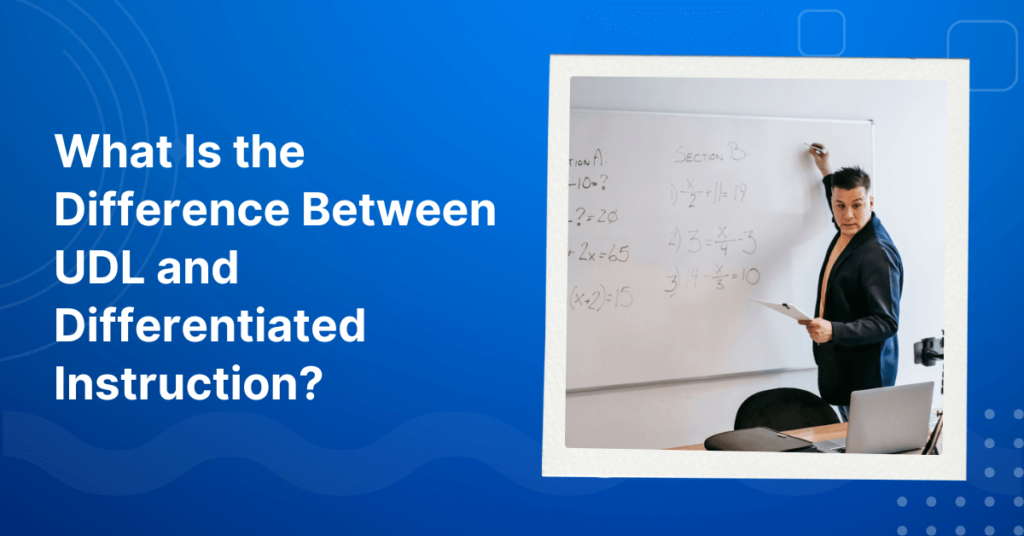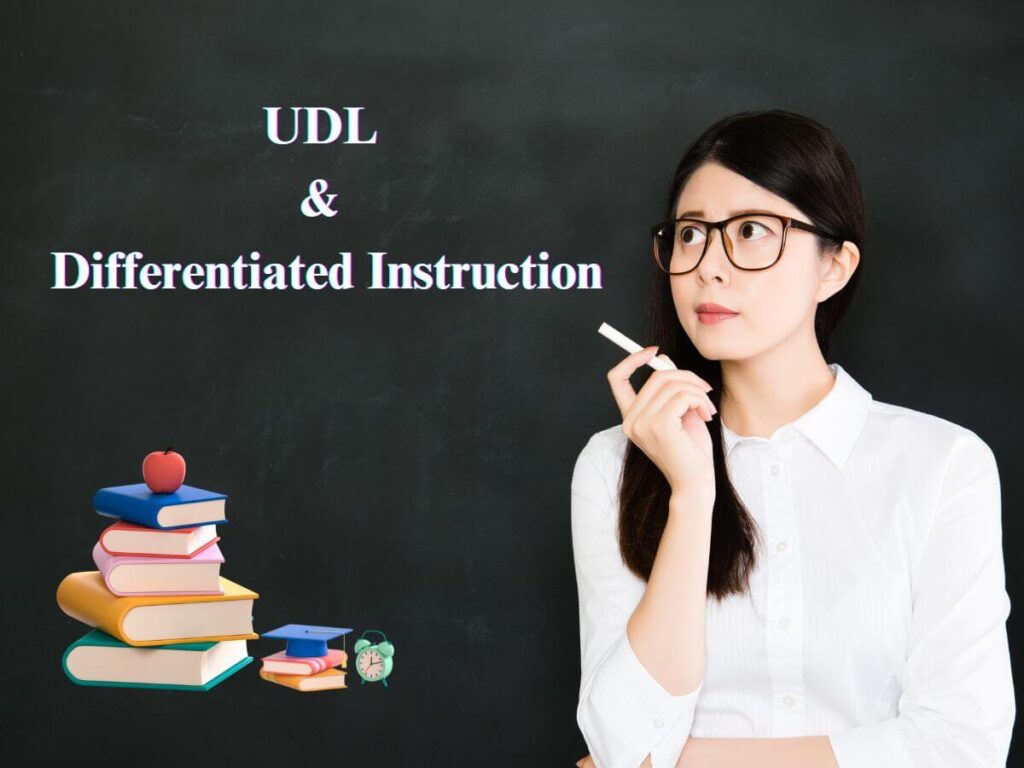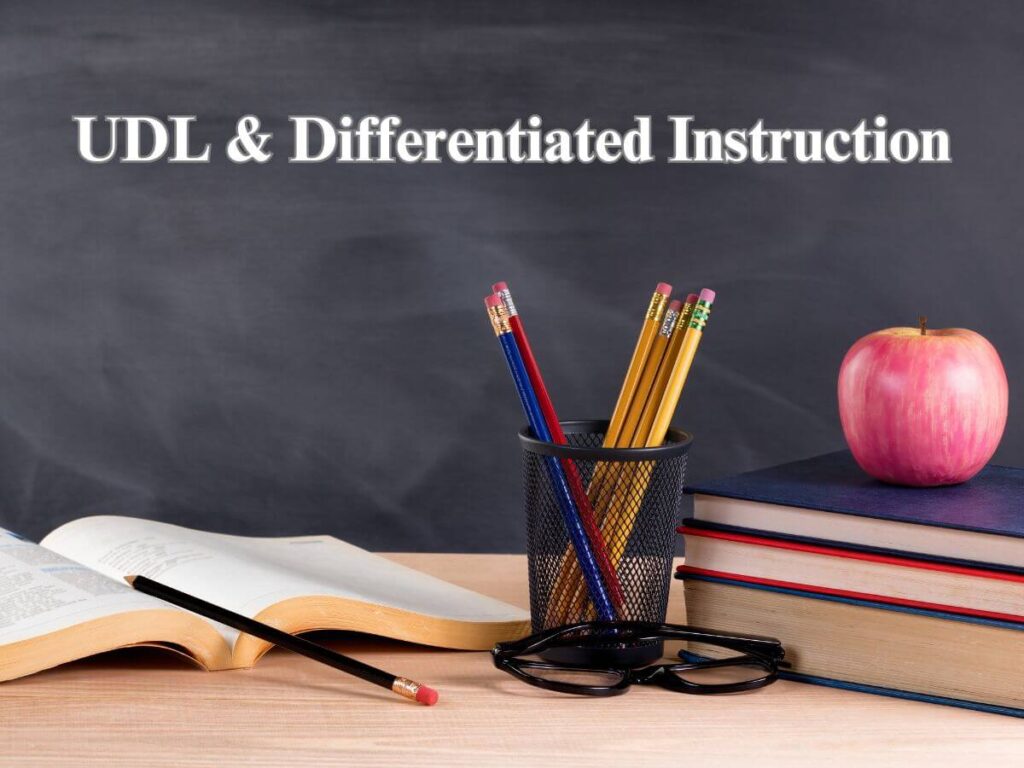Universal Design for Learning (UDL) and Differentiated Instruction are two prominent educational approaches that often cause confusion among educators. While both aim to enhance student learning, understanding their distinct characteristics and applications is crucial for implementing effective teaching strategies. This article explores the key differences between UDL and differentiated instruction to help educators make informed decisions about their teaching methods.

What Are UDL and Differentiated Instruction? Key Definitions
Universal Design for Learning (UDL) ensures that every student, regardless of their learning style or background, can engage meaningfully in the learning process. It’s a flexible approach that recognizes the diversity of learners in any classroom and aims to accommodate that diversity by offering multiple ways to access content, demonstrate understanding, and stay involved in learning.
At the heart of UDL are three main ideas:
- Representation: This is about offering different ways for students to absorb information. Some students might connect better with visuals, while others prefer reading or hands-on experiences.
- Expression: This principle emphasizes giving students options in how they showcase what they’ve learned. Whether it’s through writing, creating a project, or giving a presentation, the key is letting students express themselves in the way that works best for them.
- Participation: Learning is most powerful when students are active participants. UDL encourages educators to create engaging, interactive learning experiences that invite all students to get involved.
On the other hand, differentiated instruction focuses on tailoring learning experiences to the unique needs of each student in real time. Teachers constantly assess how well students are understanding the material and make quick adjustments to the content, the way it’s taught, or the activities students do to ensure that everyone can succeed. The goal is to meet students where they are and help them progress at their own pace.
In both approaches, the core idea is simple: every student is different, and education should reflect that by being adaptable and inclusive.
Discover Related Guides: What are the 5 P’s of Classroom Management? A Complete Guide
Main Differences Between UDL and Differentiated Instruction

What Are the 3 Key Differences Between UDL and Differentiated Instruction?
The main difference between Universal Design for Learning (UDL) and differentiated instruction lies in how they approach the diversity of learners in the classroom. While both aim to help students learn more effectively, the two approaches differ in philosophy and implementation. Check out the comparison chart below to see the main points:
| Criteria | UDL | Differentiated Instruction Methods |
| Proactivity | Design proactively from the start | Adjusting response according to needs |
| Teacher’s Role | Guiding and providing choices for students | Determining content for each student group |
| Approach | Creating conditions for students to choose independently | Providing specific solutions for each student |
In simple terms, UDL is about building a diverse lesson from the ground up, while differentiated instruction is about adapting the lesson based on the specific needs of the students. While UDL aims to create a flexible and diverse learning environment from the beginning to serve all students, differentiated instruction is about teachers finding ways to adapt to each group of students based on their understanding and assessment during the learning process.
This difference does not make one method better than the other, but rather they can complement each other. UDL creates a foundation for every student to have the best possible access, while differentiated instruction ensures that specific adjustments are made to help each progress.
Which Real-World Examples Show UDL and Differentiated Instruction in Action?
- UDL example: In a lesson about national cultures, the teacher can provide a variety of materials such as videos, articles, and images for students to choose from based on their interests.
- Differentiated teaching example: In the same lesson, the teacher can divide the class into groups based on their level of understanding so that each group can perform tasks appropriate to their abilities.
Benefits and Limitations of UDL and Differentiated Instruction
Each method has its own advantages and disadvantages. However, teachers need to know clearly to choose the right one, as long as it does not affect the teaching method too much.

UDL Teaching Method
Benefits:
- Encourages autonomy in learning.
- Increases accessibility for all students.
Cons:
- Requires time and effort to design lessons that are appropriate for all students.
Differentiated Teaching Method:
Benefits:
- Responds quickly to the specific needs of each student.
- Creates a more personalized learning environment.
Cons:
- Can be stressful for teachers as they must constantly adjust to the needs of each group.
Understanding the differences between UDL and differentiated instruction is key to optimizing instructional effectiveness. Both approaches have their own advantages and disadvantages, but when combined flexibly, they can create a rich learning environment that best meets the needs of all students. Teachers should consider adopting approaches that enhance the quality of instruction and support the holistic development of students.






